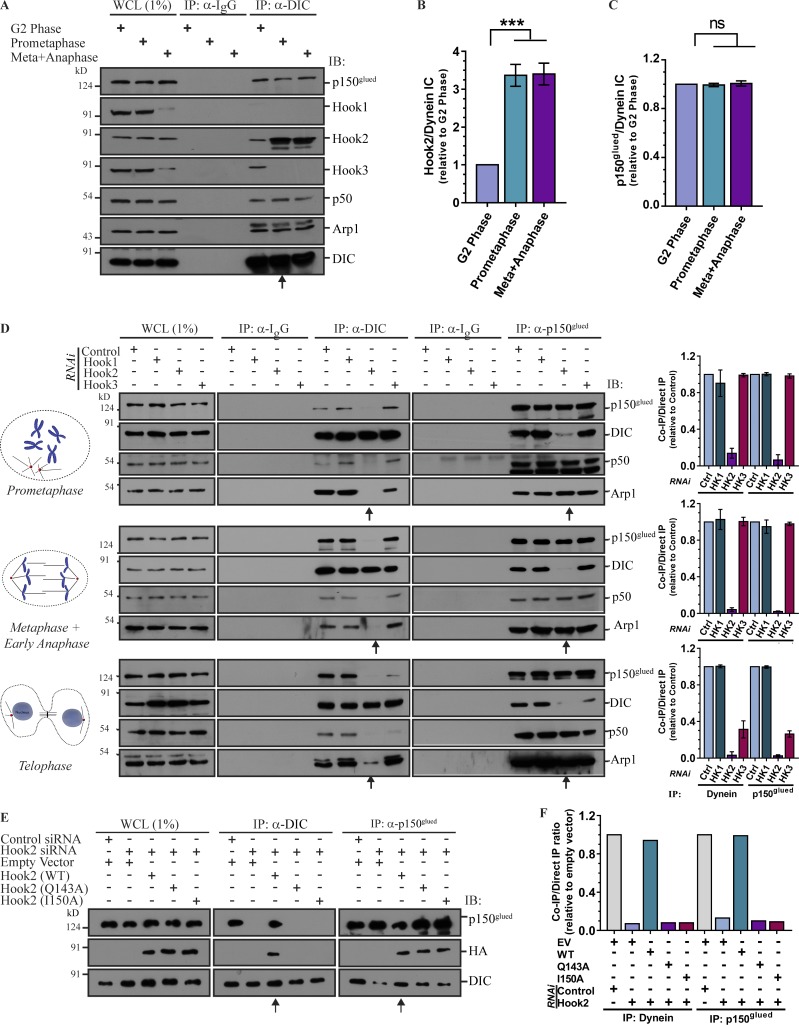Figure 2.
Hook2 is required for dynein association with dynactin during mitosis. (A) Lysates from HEK293T cells synchronized in G2 phase, prometaphase, and metaphase/anaphase were IP with control IgG or anti-DIC antibodies. The precipitates were IB with the indicated antibodies. Arrow mark prometaphase lane indicating an increased association of Hook2 with the dynein–dynactin complex at mitosis onset. (B) Ratio of normalized band intensity (G2 phase) of IP Hook2 to DIC in A (n = 4). (C) Ratio of normalized band intensity (G2 phase) of IP p150glued to DIC in A (n = 4). (D) Lysates from HEK293T cells synchronized in prometaphase, metaphase/anaphase, and telophase and transfected with indicated siRNAs were IP with control IgG or antibodies against DIC or p150glued. The precipitates were IB with indicated antibodies. Arrows mark the lanes transfected with Hook2 siRNA. The bar graphs (on the right) represent normalized band intensity (control siRNA lane of respective cell cycle stage) of IP DIC to p150glued and vice versa (n = 3). (E) Lysates from HEK293T cells synchronized in prometaphase and treated with control or Hook2 siRNA and transfected with EV or siRNA-resistant construct of Hook2 (WT/dynein binding-defective mutant) were tested for dynein–dynactin interaction as in D. Arrows mark the lanes transfected with Hook2 siRNA and siRNA-resistant Hook2 (WT). (F) Ratio of normalized band intensity (control siRNA) of IP DIC to p150glued and vice versa in E (n = 2). Data represent mean ± SD (ns, not significant; ***, P < 0.001; Student’s t test).

